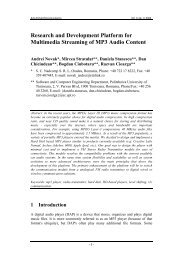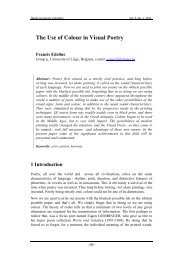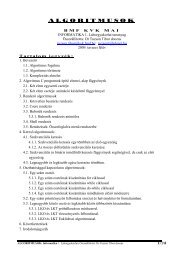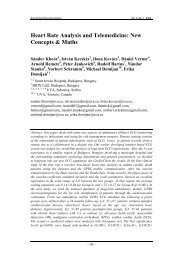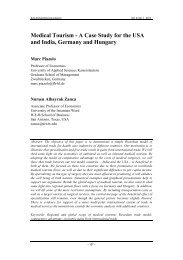RTOS Program Models Used in Embedded Systems
RTOS Program Models Used in Embedded Systems
RTOS Program Models Used in Embedded Systems
Create successful ePaper yourself
Turn your PDF publications into a flip-book with our unique Google optimized e-Paper software.
J. Kopják et al. <strong>RTOS</strong> <strong>Program</strong> <strong>Models</strong> <strong>Used</strong> <strong>in</strong> <strong>Embedded</strong> <strong>Systems</strong><br />
output of flip-flop must be set to true; if the reset p<strong>in</strong> of set-reset flip-flop change<br />
to true, then the output of flip-flop must be set to false.<br />
The structure of event process<strong>in</strong>g loop is similar to the functions developed basis<br />
on state-mach<strong>in</strong>e model. The core of loop is an switch-case structure. The switch<br />
tag jumps to the selected function description based on <strong>in</strong>com<strong>in</strong>g event ID.<br />
Follow<strong>in</strong>g piece of C-language sample code illustrates the body of event<br />
process<strong>in</strong>g loop.<br />
while(1)<br />
{<br />
/* Gett<strong>in</strong>g event from event queue */<br />
if( xQueueReceive( xEventQueue, &xReceivedEvent, 0 )<br />
== pdPASS )<br />
{ // On successful reception:<br />
/* Jump to selected task based on message ID */<br />
switch ( xReceivedEvent.uiEventID )<br />
{<br />
case BUTTON: // The button has bean sent<br />
/* ... */ // the message<br />
break; // End of message process<strong>in</strong>g<br />
}<br />
case TIMER: // The timer has bean sent<br />
/* ... */ // the message<br />
break; // End of message process<strong>in</strong>g<br />
}<br />
else // There is no event wait<strong>in</strong>g to be processed:<br />
{<br />
Idle(); // The processor goes to power sav<strong>in</strong>g mode<br />
}<br />
The advantage of program based on traditional event-driven model is that the<br />
model <strong>in</strong>cludes the automatic control of processor power consumption. If the<br />
message comes when the event queue is empty the response time of program is<br />
the message process<strong>in</strong>g plus the answer generation time. The disadvantage is that<br />
the program can not rank events based on their importance and is not suitable to<br />
create modular program.<br />
Conclusions<br />
All programm<strong>in</strong>g models presented here have their own reason for existence. For<br />
smaller tasks may be useful to use design models presented at the beg<strong>in</strong>n<strong>in</strong>g of the<br />
article, for complex systems are better solutions described <strong>in</strong> the second half of the<br />
article. Complex models are us<strong>in</strong>g more processor for adm<strong>in</strong>istrative tasks <strong>in</strong>stead<br />
of real problem, thereby reduc<strong>in</strong>g the effectiveness of the processor. On battery<br />
powered solutions should be used solution where the models automatically<br />
manage the processors energy consumption.<br />
References<br />
[1] József Kopják – Dr. János Kovács, Event-driven control program models<br />
runn<strong>in</strong>g on embedded systems, 2011<br />
[2] Bruce Powel Douglass, Real-Time UML: develop<strong>in</strong>g efficient objects for<br />
embedded systems, 1998<br />
[3] Richard Barry, Us<strong>in</strong>g The Free<strong>RTOS</strong> Real Time Kernel, 2009<br />
– 170 –






